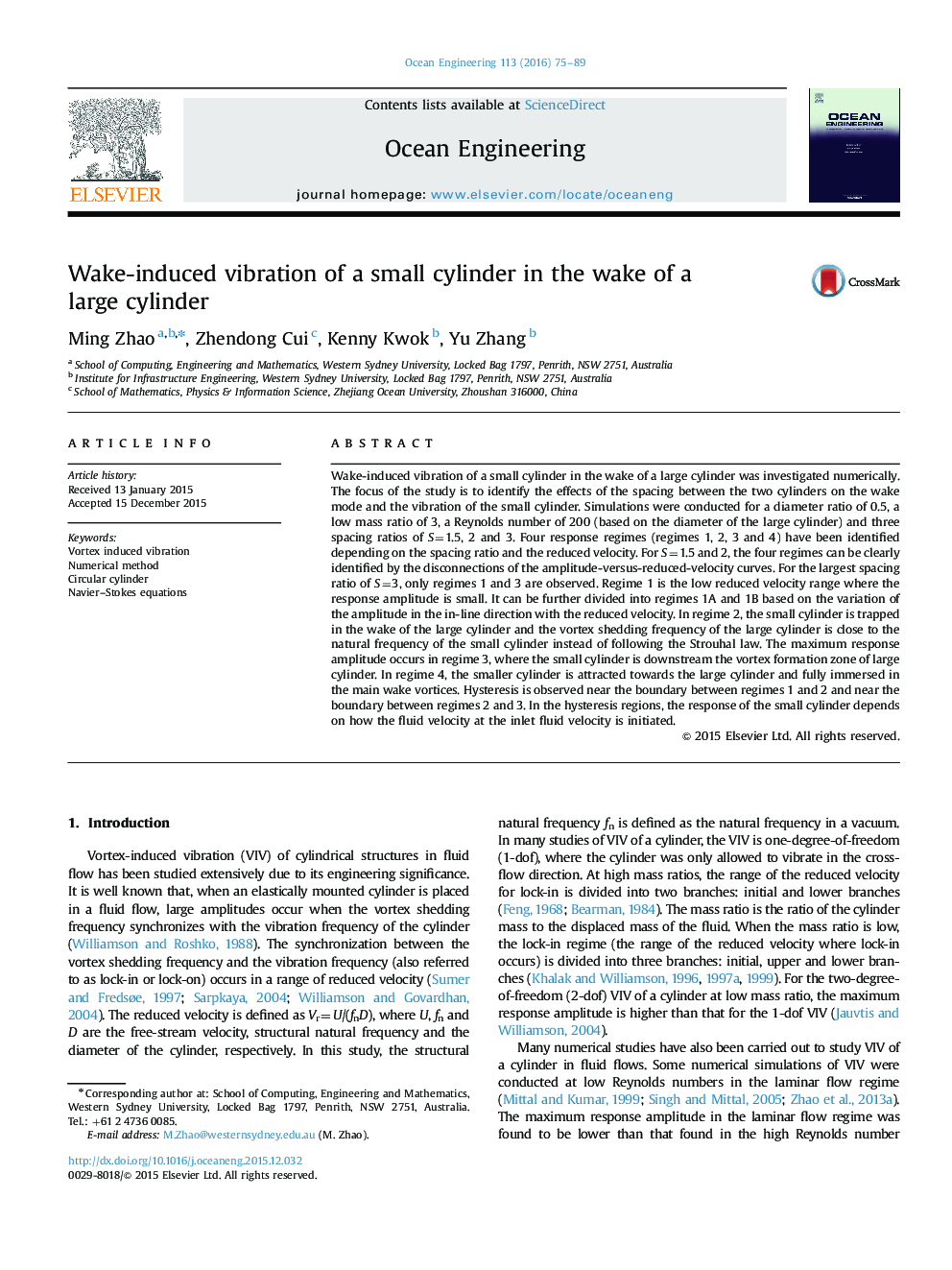| کد مقاله | کد نشریه | سال انتشار | مقاله انگلیسی | نسخه تمام متن |
|---|---|---|---|---|
| 8064816 | 1520677 | 2016 | 15 صفحه PDF | دانلود رایگان |
عنوان انگلیسی مقاله ISI
Wake-induced vibration of a small cylinder in the wake of a large cylinder
ترجمه فارسی عنوان
لرزش ناشی از وایک یک سیلندر کوچک در پی سیلندر بزرگ
دانلود مقاله + سفارش ترجمه
دانلود مقاله ISI انگلیسی
رایگان برای ایرانیان
کلمات کلیدی
موضوعات مرتبط
مهندسی و علوم پایه
سایر رشته های مهندسی
مهندسی دریا (اقیانوس)
چکیده انگلیسی
Wake-induced vibration of a small cylinder in the wake of a large cylinder was investigated numerically. The focus of the study is to identify the effects of the spacing between the two cylinders on the wake mode and the vibration of the small cylinder. Simulations were conducted for a diameter ratio of 0.5, a low mass ratio of 3, a Reynolds number of 200 (based on the diameter of the large cylinder) and three spacing ratios of S=1.5, 2 and 3. Four response regimes (regimes 1, 2, 3 and 4) have been identified depending on the spacing ratio and the reduced velocity. For S=1.5 and 2, the four regimes can be clearly identified by the disconnections of the amplitude-versus-reduced-velocity curves. For the largest spacing ratio of S=3, only regimes 1 and 3 are observed. Regime 1 is the low reduced velocity range where the response amplitude is small. It can be further divided into regimes 1A and 1B based on the variation of the amplitude in the in-line direction with the reduced velocity. In regime 2, the small cylinder is trapped in the wake of the large cylinder and the vortex shedding frequency of the large cylinder is close to the natural frequency of the small cylinder instead of following the Strouhal law. The maximum response amplitude occurs in regime 3, where the small cylinder is downstream the vortex formation zone of large cylinder. In regime 4, the smaller cylinder is attracted towards the large cylinder and fully immersed in the main wake vortices. Hysteresis is observed near the boundary between regimes 1 and 2 and near the boundary between regimes 2 and 3. In the hysteresis regions, the response of the small cylinder depends on how the fluid velocity at the inlet fluid velocity is initiated.
ناشر
Database: Elsevier - ScienceDirect (ساینس دایرکت)
Journal: Ocean Engineering - Volume 113, 1 February 2016, Pages 75-89
Journal: Ocean Engineering - Volume 113, 1 February 2016, Pages 75-89
نویسندگان
Ming Zhao, Zhendong Cui, Kenny Kwok, Yu Zhang,
